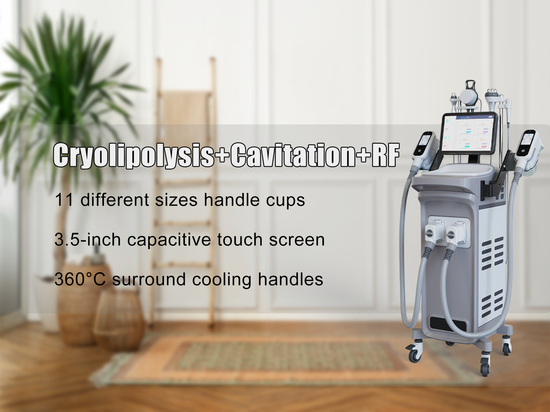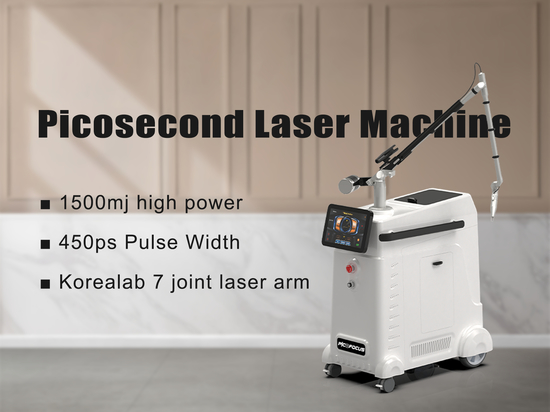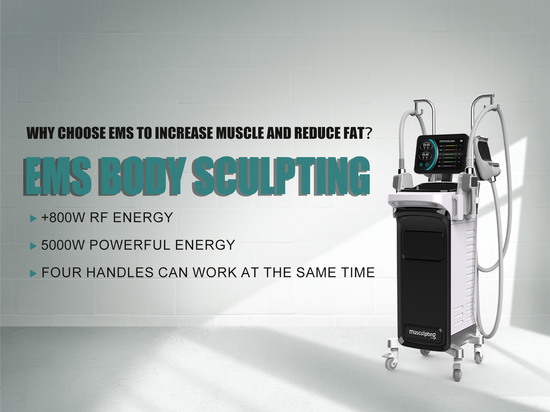
#Industry News
Does the eyebrow still grow after laser eyebrow cleaning?
Things about laser eyebrow washing
Things about laser eyebrow washing
In order to improve the scarcity of eyebrows and eyelashes, poor eyebrow shape and other conditions, some beauty lovers may choose embroidery. However, some people try their best to remove embroidery after doing embroidery because of aesthetic and color changes or the expected effect is not achieved. Generally, in this case, they can choose laser eyebrow washing/eyeliner.
PART one
Are eyebrows/eyelashes still grow after laser eyebrow washing/eyeliner?
Laser eyebrow washing/eyeliner is to use a specific laser instrument, mainly using the principle of selective photothermal action to enable the laser to effectively penetrate the epidermis to reach the dermis, break the pigment particles and discharge them out of the body with the metabolism of the body, so as to achieve the purpose of treatment.The adjacent normal tissues will not be damaged.
PART two
How long will it take to grow out?
In clinical practice, when performing laser eyebrow cleaning, our eyebrows are mainly black or brown in color. Professional doctors will choose whether to keep the eyebrows based on the patient's request during the operation.
If the eyebrows are preserved, during laser eyebrow cleaning, as the eyebrows are black they will absorb some of the laser energy, causing the eyebrows to temporarily turn white. Generally, after treatment, the eyebrows will gradually return to normal color in the short term, without causing significant damage to our eyebrows and hair follicles, so it will not affect eyebrow growth.
If the eyebrows are scraped off, reducing the absorption of laser energy by black hair can increase the efficiency of laser eyebrow cleaning. Generally speaking, shaved eyebrows will regrow within one and a half to two months.
After laser washing of eyeliner, the root of eyelashes will turn white, which is normal, and can return to normal color at least 2 weeks.
In short,generally after laser eyebrow washing/eyeliner, eyebrows/eyelashes can grow normally. If eyebrows/eyelashes may fall off after surgery, it is recommended to observe temporarily. Generally, the growth cycle of hair follicles is 28 days, that is, new eyebrows/eyelashes can grow 1 month after laser eyebrow washing/eyeliner. Generally, eyebrows/eyelashes can grow completely 3 months later. If it is found that the eyebrows/eyelashes have not grown after 3 months, it is necessary to consider damage to the hair follicles, which may cause the eyebrows/eyelashes in that area to no longer grow. Subsequently, depending on the situation, hair transplantation can be chosen for eyebrow or eyelash implantation to improve.
PART three
How to wash eyebrows correctly?
Pre-operation:
1.The beautician should establish a surgical record for the client before the surgery and inquire in detail whether the client has a scar constitution, whether they have changed skin, whether they have allergic skin, whether they have covered their eyebrows or have previously washed or tattooed their eyebrows using other methods. Paying attention to whether there are scars and explain to the patient that there may be pigmentation marks left after removing the tattoo color for a period of time. These pigmentation marks are caused by sun exposure after the previous tattoo and can be treated again after one and a half months. If the patient originally used composite pigments or chemical pigments for embroidery, due to the presence of iron ions and lead ions in the pigments, there may be light colored marks after the removal of blue and black pigments. Treatment can be resumed after one and a half months. For large tattoos or Ota moles, it is recommended to treat them in sections and stages to avoid excessive postoperative reactions and discomfort. At the same time, clear preoperative and postoperative comparisons can be used to help patients build confidence and continue to adhere to treatment.
2.Selecting the appropriate treatment head (1064nm wavelength head for removing blue, black and cyan pigmentation; 532nm wavelength head for removing red, coffee and brown pigmentation) and the required laser dosage based on the actual situation of the customer. At the same time, beauticians should patiently explain the advantages of laser beauty treatment to clients in order to gain their full relaxation and cooperation.
3.Before surgery, clean the treatment area and disinfect the treatment equipment. If eyebrow washing is performed, the eyebrows should be scraped clean before surgery; Then scrub and clean the affected area with normal saline, and sterilize the tarsal plate and medical gauze used for washing eyeliner; It must be pointed out that absolute dryness of the affected area must be ensured during treatment, and the laser should not be irradiated on water, otherwise the light energy will rapidly decay, seriously affecting the treatment effect.
4.Operators and patients should wear white or light colored work clothes, wearing protective goggles of corresponding wavelengths, avoid using mirrors or high gloss tools, ensure the cleanliness of the operating room.Indoor lighting should be sufficient, with a temperature between 18-38 ℃, laser irradiation should be avoided in non therapeutic areas.
5.When operating avoid wearing accessories such as watches, necklaces, bracelets, etc. that can reflect laser light.
During the operation:
1.During treatment, the operator holds the laser handle to form a 90 degree right angle with the treatment area as much as possible, ensuring that the laser emits light vertically and reducing laser energy loss; Eyebrow washing, eyeliner, lip line and light spots should be superimposed and translated to form a straight line; When washing a mole, small areas should be treated in batches. For each small portion treated, it is required that the affected area shows signs of bleeding.
2.Due to the instantaneous high-energy irradiation of the laser, a portion of the pigments in the superficial epidermis are immediately ejected from the body, while another portion in the deep tissue is evenly distributed to the epidermis. Therefore, the color of the wrinkles is restored in a short period of time after surgery.When treating tissues with deep striations, due to the strong absorption of laser energy by melanin, local redness, swelling, blisters and even bleeding may occur. These are all normal inflammatory reactions of the tissue, and the severity of local inflammation varies from person to person. After the inflammation subsides, touching the tissue may cause itching and a feeling of tissue hardening. Generally speaking, all negative feelings will disappear on their own within 3-7 days after surgery, and some individuals may persist for 1-3 months due to physical reasons.
3.Optical factors to be considered during laser treatment; wavelength, spot area, energy density, irradiation angle, energy density=energy/spot area. The higher the energy density, the stronger the ability to crush pigments; The depth of penetration through the skin varies with different wavelengths. In the case of a constant wavelength, the larger the spot area, the deeper the penetration through the skin.
4.When using 1064nm laser to treat black and blue pigments, there may be strong pigment burst and accompanied by strong sound due to the strong absorption of laser energy by melanin in tissues with deep color layers. Shallow pigment clusters will burst out of the epidermis due to energy absorption. A small number of people with thin stratum corneum are prone to bleeding spots. In the first time of laser treatment, the color of the tissue will become very light at that time, but it will recover after more than ten minutes, which is also a normal reaction of the tissue. The phagocytic and transport functions of macrophages will continue for a long time, during which the texture of the tissue will gradually become lighter. It is recommended to undergo a second treatment (one and a half months after the first treatment). Eyeliner washing is prone to tears because of the sensitivity of the eyes. Tears will absorb laser and affect the effect. Generally it is done twice.
5.When using 1064nm laser to treat black and blue pigments, the hair may discolor and fall off after surgery, but new hair will grow back within about two weeks and may temporarily become denser than before and gradually returning to normal. There is bleeding and slight edema in the treated area. After reducing swelling, there may be a feeling of itching and there may be tissue hardening when touched. These are all normal reactions of the tissue and all adverse feelings will completely disappear within about two weeks to one month, the duration varying from person to person.
6.When using 532nm laser to treat brown and red pigments, the hemoglobin in human tissue has a certain absorption effect on the 532nm wavelength. Therefore, after laser irradiation the skin surface turns white, the epidermis necrosis occurs and pigment loss or deposition occurs.
7.When using 532nm laser to treat brown and red pigments, subcutaneous capillaries and other tissues may rupture and form subcutaneous congestion after absorbing 532nm laser, resulting in "purpura" phenomenon. In severe cases, it can lead to scabbing and the recovery time varies from person to person, about 20-60 days.
8.During treatment, the operator must ensure proper eye protection for both the operator and the patient as laser damage to the eyes is irreversible!Strict and effective eye protection must be provided to patients. If covered with moist gauze or thick cotton pads, protected by eyelid shields, etc. The operator should cover the eyes of the recipient with gauze or thick cotton piece wet. When washing eyeliner, the operator must follow our training finger method to perform eyeliner washing operation after skilled operation! If eyelid pads or eye masks are used to protect the eyeball during surgery, the operator should have clinical experience in ophthalmology and must strictly disinfect the above-mentioned instruments when using them. Otherwise, improper eye protection can cause great discomfort to the patient, ranging from mild cases of keratitis to severe cases of corneal detachment and even blindness.Laser protective goggles cannot completely protect against direct laser or laser reflected by glass, mirrors, or smooth metal surfaces. Therefore, it is strictly prohibited to wear protective goggles and look directly at the direct laser and reflected light mentioned above.Never look directly at the end port of the treatment head and any reflected laser beam!
9.The instrument operation should start with low energy and gradually increase when the energy is insufficient. At the same time, the customer's feelings should be asked. If the effect is not satisfactory after one treatment, the operation can be repeated.
Precautions for eyebrow washing
1.Before washing the eyebrows, first identify the color of the eyebrows, analyzing what color pigments the customer has used and their skin type, then decide what wavelength and number of eyebrow washes to use.
2.It is recommended to use 1064 for washing first, and then decide which wavelength to use for washing again after 1 to 3 months based on the color of the customer's eyebrows; The instrument is generally equipped with two therapeutic bands, 1064nm and 532nm. From the perspective of energy comparison using the same energy value, 532 produces a greater effect than 1064; in terms of depth comparison, 1064 is darker and 532 is lighter. To ensure recovery, a 1064 probe with lower energy is used for darker colors, and a 532 probe is used for colors similar to the skin. If the 1064 energy feels too high the firing angle can be changed to reduce the blasting depth.
3.Do not attempt to wash the customer's eyebrows clean in one go. Hurriedly seeking results and wanting to wash thoroughly in one go often results in excessive depth and weight, causing significant damage to the skin and leading to infections and scarring. It is not worth the effort and it is recommended to wash in multiple sessions.
4.The interval between each eyebrow wash should be at least 30 days. Generally, hospitals require a period of 3 months before the next wash can be performed. The greater the energy used and the heavier the washing, the longer the interval time will be. If the interval is too short and the skin has not fully recovered before washing, it will wash the skin and leave scars.
Post-operation
(1) Postoperative care
1.Do not draw eyebrows on bleeding areas.
2.Do not wash with water within 48 hours after surgery; prohibit sexual intercourse to prevent pigment reflux. Do not rub, let the scab peel off on its own, do not forcefully peel off, do not participate in intense exercise to avoid infection caused by sweating.
3.Take good care of sun protection.
4.Within 3-7 days, do not consume spicy or stimulating foods, and prohibit smoking and drinking; prohibit the consumption of food containing artificial colors.
5.In case of sensitive customers with excessive bleeding and severe swelling, we recommend that they take oral antibiotics (acetylspiramycin) after surgery and apply erythromycin ointment to the affected area during the recovery period (72 hours after surgery) to help with healing. Alternatively, repair fluid can be applied for repair.
6.After eyebrow washing, there may be a brief redness and swelling reaction, but it will disappear on its own after a period of time and does not require special care.
7.The scab will fall off on its own in about a week, but there may be some cases of normal temporary pigmentation after surgery, which will gradually fade away. Vitamin C can be eaten to reduce pigment reflux.
8.How to deal with scars after laser eyebrow washing: During the process of eyebrow washing, a large amount of connective tissue is generated to repair the wound due to damage to the dermal tissue, the wound becomes a scar after recovery. After the appearance of scars, long-acting steroid drugs such as dexamethasone or triamcinolone acetonide can be used for treatment. These drugs can cause collagen fibers to atrophy and gradually smooth out scar lumps.
(2) The symptoms that can achieve a good effect after treatment: slight redness and swelling, slight bleeding.
After laser eyebrow washing, there may be a brief redness of the skin. Don't worry, there may be bleeding, slight edema and itching after swelling reduction. This is a normal postoperative reaction and all adverse feelings will completely disappear within about two weeks to one month. The length of time varies from person to person. The treatment area for eyebrow washing may experience tissue hardening upon touch, which is a normal response of the tissue.
PART four
Taboo population
1. Pregnant women,people with high blood pressure or severe heart disease;
2. People with scar constitution (some embroidery customers can wash);
3. Birthmarks and moles higher than the skin;
4. People who have had their eyebrows washed many times: due to the thinning of the epidermis and dermis tissue, the risk of eyebrow washing is also higher;
5. People with deeply tattooed eyebrows: Those who had deeply tattooed eyebrows in the past are also not suitable for eyebrow washing surgery. Ordinary eyebrow washing machines usually cannot effectively penetrate deep layers and have poor results;
6. People who are particularly prone to scarring: People whose bodies are prone to scarring may develop scars after eyebrow washing, so eyebrow washing is not recommended;
7. People with obsessive-compulsive personality tendencies: People with obsessive-compulsive personality tend to be nervous, anxious, eager to be kind and have high demands on themselves, so even if the surgery is successful, there will still be dissatisfaction for them.
PART five
The determinants of difficulty in removing pigments
1. Pigments are kinds of plant pigments, composite pigments and chemical pigments
The difficulty of removal increases from easy to difficult. Usually composite pigments and chemical pigments contain iron and lead minerals that can easily deposit in the deep layers of the skin. The quality of the texture of the embroidery pigments directly causes difficulties in treatment;
2. Embroidery technique: Shallow pigments are easy to remove, while deep and dermal pigments pose certain treatment difficulties;
3. Differences in human body constitution. This includes various factors such as age, skin type, and body immunity;
4. Is the operating technique correct;
5. The level of instrument energy;
6. The initial treatment has a significant effect on pigment removal, but the effect is weakened when treated again.





